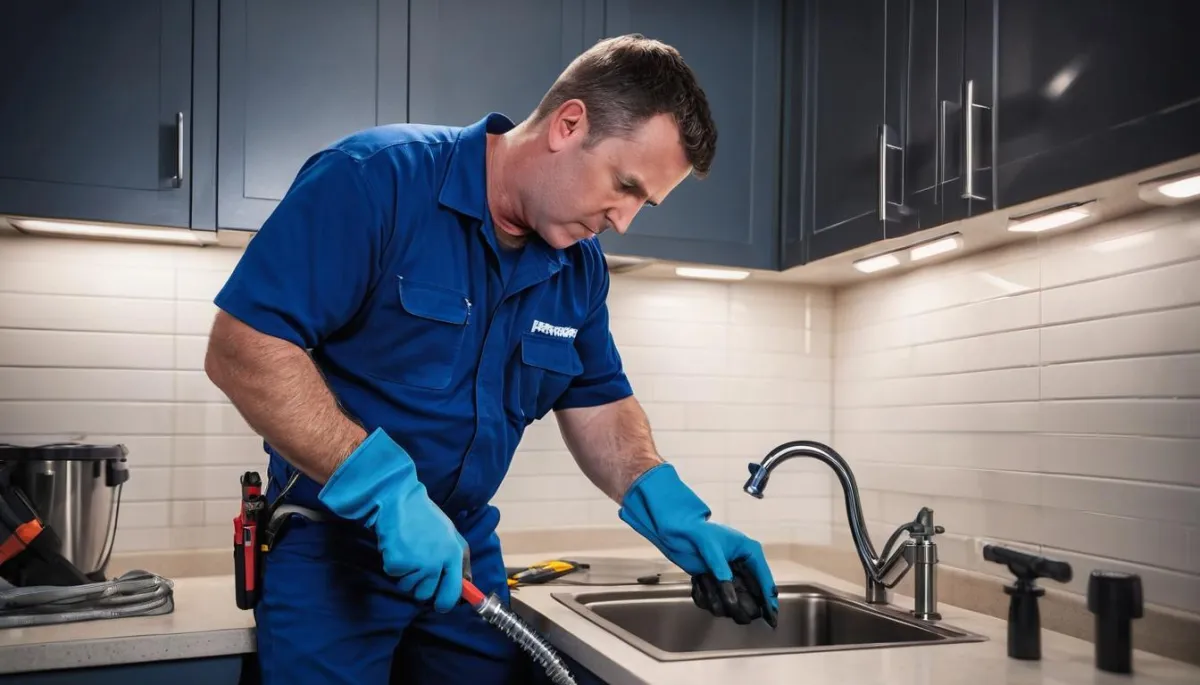Our Blog
Discover the world of plumbing through our plumbing technicians.

Why Tree Roots Are a Threat to Your Sewer Line and How to Prevent Damage in Calgary Homes
Tree roots are a hidden menace for many Calgary homeowners, causing significant damage to sewer lines. They infiltrate underground pipes in search of water and nutrients, leading to blockages, leaks, and costly repairs.
Addressing this issue early can prevent major headaches. In this guide, we'll explore how tree roots impact sewer systems and offer actionable tips to prevent damage to your home.
Understanding How Tree Roots Impact Sewer Lines in Calgary
Why Tree Roots Seek Sewer Lines
Tree roots naturally grow toward sources of water and nutrients. Sewer pipes, especially older or damaged ones, are a prime target as they release moisture and organic material through small cracks or joints.
Nutrients and Moisture Attracting Tree Roots
Roots are drawn to the steady flow of water and nutrients in sewer pipes, making them a common problem for homeowners.
Vulnerabilities in Older Sewer Pipes
Older clay or cast iron pipes in Calgary are more prone to cracks and leaks, creating easy entry points for invasive tree roots.
Early Signs of Sewer Line Intrusion by Roots
Tree root invasions often start small but can escalate quickly. Watch for the following warning signs:
Slow Drains and Gurgling Sounds
These are often the first indications of a blockage caused by roots growing inside the pipes.
Unpleasant Odors from Drains
A foul smell may occur if organic material is trapped in a root blockage, creating a breeding ground for bacteria.

Top Causes of Sewer Line Blockages in Calgary Homes
The Role of Nearby Trees in Sewer Line Damage
Trees with aggressive root systems pose the biggest threat to sewer lines.
Species with Aggressive Root Systems
Maples, willows, and poplars are particularly notorious for their invasive roots.
Proximity of Trees to Sewer Systems
Trees planted too close to sewer lines can quickly become a problem. Ideally, trees should be at least 10-20 feet away from underground pipes.
Other Common Factors Leading to Sewer Line Damage
While tree roots are a major concern, other factors can also cause sewer line issues:
Pipe Corrosion and Age
Old or corroded pipes are more likely to crack and invite root infiltration.
Shifting Soil and Weather Conditions in Calgary
Harsh weather or soil shifting can cause pipes to move, crack, or separate, leaving them vulnerable to tree root invasion.
How to Prevent Tree Root Damage to Sewer Lines
Regular Sewer Line Inspections and Maintenance
Preventive maintenance is your best defense against root damage.
Importance of Professional Sewer Line Camera Inspections
Using a camera to inspect sewer lines can detect early signs of root intrusion before it becomes a costly repair.
Scheduling Preventive Root-Clearing Services
Professional root-clearing services can remove small roots before they grow into larger obstructions.
Smart Landscaping Practices to Protect Sewer Lines
Landscaping choices play a significant role in preventing root damage.
Choosing Sewer-Safe Trees for Calgary Yards
Opt for trees with non-invasive root systems, such as Japanese Maple, Crabapple, or Dogwood.
Creating Barriers Between Trees and Sewer Lines
Installing root barriers during landscaping projects can help protect your pipes.
Using Chemical Root Killers Safely
Chemical treatments are an effective way to prevent root growth inside pipes.
Benefits of Root Killers in Preventing Intrusions
These products kill small roots in the pipes without harming the tree itself.
Proper Application to Avoid Pipe Damage
Always follow the manufacturer’s instructions to prevent damaging your pipes or contaminating nearby water sources.
Steps to Take if Tree Roots Have Already Invaded Your Sewer Line
Signs Your Sewer Line May Be Compromised
Recognizing the signs of root intrusion early can help minimize damage.
Persistent Backups and Slow Drainage
Frequent clogs and slow drains are telltale signs of root blockages.
Unexplained Patches of Green in Your Yard
Lush, green patches of grass may indicate a sewer line leak caused by root damage.
Professional Solutions for Sewer Line Root Removal
If you suspect root damage, it’s time to call in the experts.
Hydro Jetting to Clear Root Obstructions
High-pressure water jets can remove roots and other debris from your sewer line.
Sewer Line Repairs or Replacements
For severe damage, trenchless sewer line repair or replacement may be necessary.
FAQs
What are the warning signs of tree roots in sewer lines?
Slow drainage, foul odors, and frequent clogs are common signs. You may also notice green patches in your yard.
How do professionals remove tree roots from sewer lines?
Experts use methods like hydro jetting or mechanical root-cutting tools. For severe cases, trenchless repair or pipe replacement may be recommended.
Can tree root damage to sewer lines be completely prevented?
While it’s impossible to eliminate the risk entirely, regular maintenance and smart landscaping practices can significantly reduce the likelihood of damage.
Are there specific trees that are less likely to damage sewer lines?
Yes, trees with non-invasive roots, like Japanese Maple, Dogwood, and Crabapple, are safer options for planting near sewer lines.
What is the cost of repairing sewer line damage caused by tree roots in Calgary?
The cost varies depending on the extent of the damage, but regular inspections and maintenance are much more affordable than major repairs.

